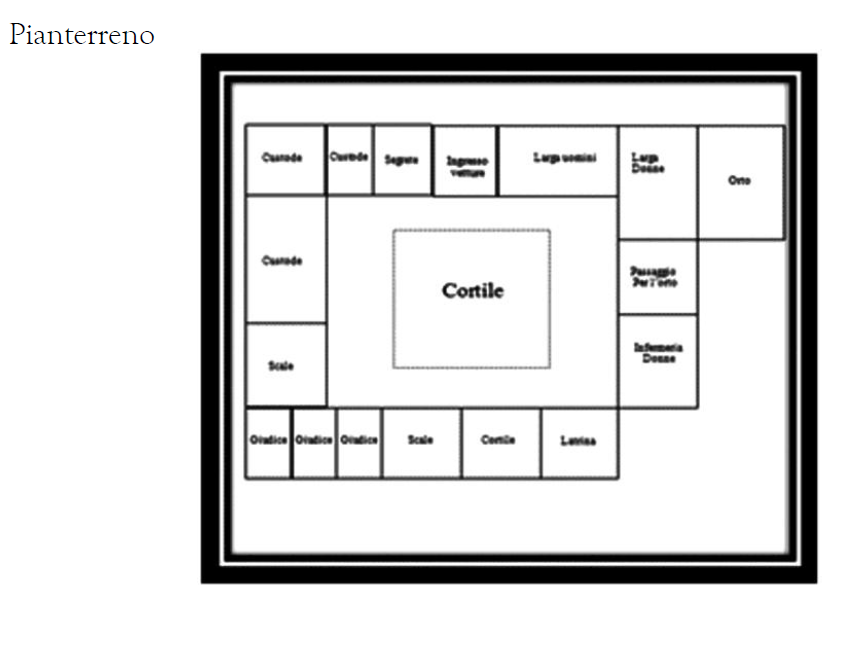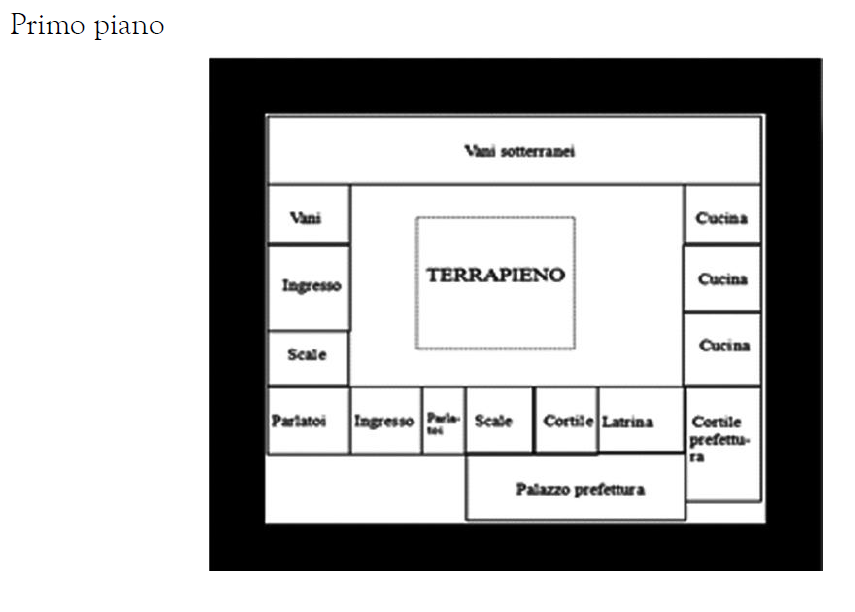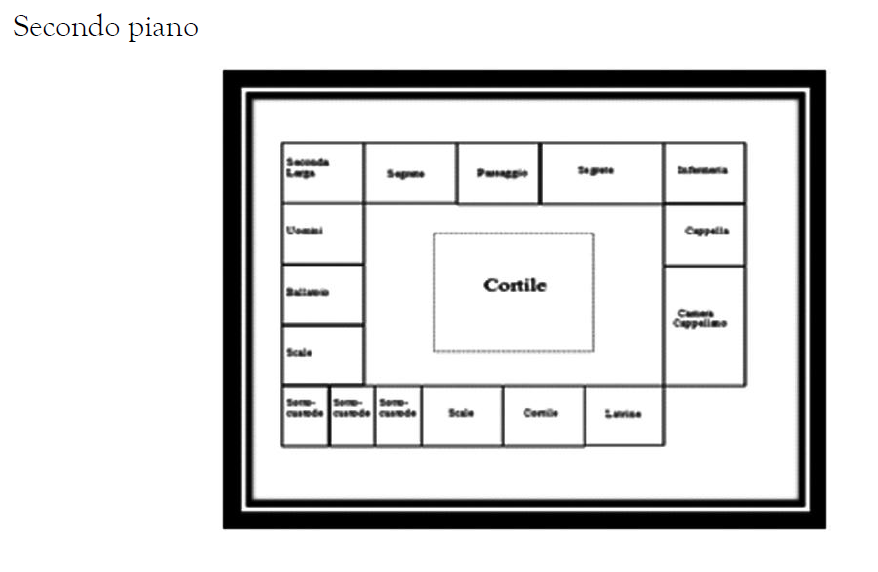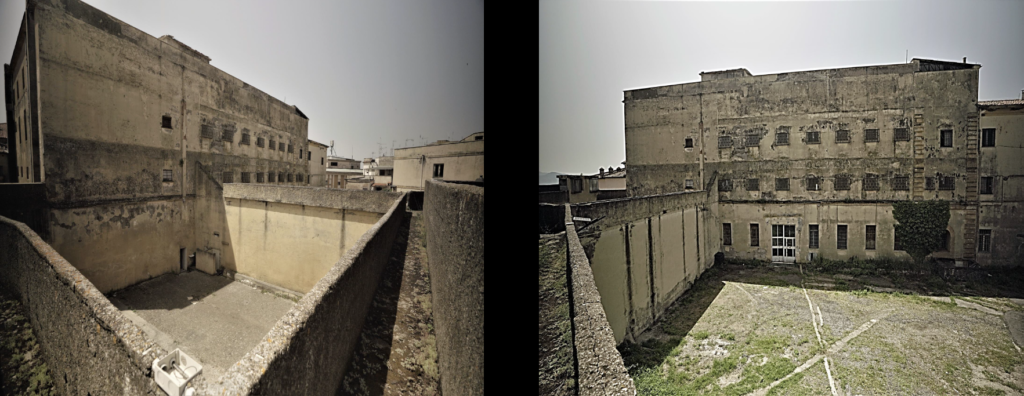 | |
HISTORICAL SHEET OF THE FORMER PONTIFICAL PRISON
via Castello, 34 – 00049 VELLETRI
The central action of the project “iosonovulnerabile” revolves around the houses of Romolo Romani in the district of Castello. These houses were officially offered to the pontifical legation in 1865 at a price of about 4,340 scudi, equivalent to 23,327.90 Italian lire.
This building has significant historical value.
The “High Council of Public Works of Art Affairs,” established on October 23, 1817, under the President of the Roads, approved the examination of cost estimates for the work on October 8, 1866, reconfirming the approval on September 19, 1867, and September 7, 1871. 
The Ministry of the Interior at the time asked the Judiciary of Velletri to contribute to the expenses for the purchase of the Romani property with a contribution of 2,000 scudi, almost half of the price, payable in four annual installments of 500 scudi.
On September 5, 1867, the Municipal Council approved the expenditure with a large majority, and on March 14, 1868, increased the contribution from 2,000 to 2,950 scudi. 
The Romani property was handed over to the engineer Busiri of the Pontifical Engineering Corps on June 15, 1870, even though the family had already moved in 1868 to the house of Girolamo Romani’s wife on Via Corriera.
The contract for the work was won, in 1868, by Achille Fiori for an amount of 91,044.73 lire. Despite the deadline of December 31, 1871, for the completion of the work, the new prison was only delivered in September 1875, as on October 16, 1873, the Italian government entrusted Tommaso Bianchini with the works of improvement and security for the new building, at a cost of 5,567.40 lire.
 The new Pontifical prison of Velletri, located at the highest point of the settlement and at the political heart of the city, boasted an ideal position due to the presence of the Prior’s Palace, public offices, a courtroom, and police offices. The structure included three floors, with a division between the female and male sections, which included both small and large cells. The small cells, as the name suggests, were used to isolate the detainee, especially during interrogations, while later, the individual was transferred along with other inmates to the larger cells. The cells called “la ruota” (the wheel) and “la catena” (the chain) clearly indicated their purpose. In addition to the large and small cells, the structure included three rooms for kitchens, medical facilities, a spacious chapel dedicated to the Holy Cross, and three rooms for the judge. The prison chapel, in addition to its religious function celebrated three times a week, was also used as a cinema hall. In 1991, the High-Security Prison in Lazzaria was inaugurated, and the detainees were gradually moved. The former Pontifical prison of Castelli, owned by the state company “Cdp Investimenti Sgr Spa,” was included in the list of abandoned buildings in Italy for over 30 years. However, thanks to the resolution of November 30, 2015, of the Municipal Council of the City of Velletri, it was purchased and preserved from any real estate speculation through an expenditure of 1.3 million euros.
The new Pontifical prison of Velletri, located at the highest point of the settlement and at the political heart of the city, boasted an ideal position due to the presence of the Prior’s Palace, public offices, a courtroom, and police offices. The structure included three floors, with a division between the female and male sections, which included both small and large cells. The small cells, as the name suggests, were used to isolate the detainee, especially during interrogations, while later, the individual was transferred along with other inmates to the larger cells. The cells called “la ruota” (the wheel) and “la catena” (the chain) clearly indicated their purpose. In addition to the large and small cells, the structure included three rooms for kitchens, medical facilities, a spacious chapel dedicated to the Holy Cross, and three rooms for the judge. The prison chapel, in addition to its religious function celebrated three times a week, was also used as a cinema hall. In 1991, the High-Security Prison in Lazzaria was inaugurated, and the detainees were gradually moved. The former Pontifical prison of Castelli, owned by the state company “Cdp Investimenti Sgr Spa,” was included in the list of abandoned buildings in Italy for over 30 years. However, thanks to the resolution of November 30, 2015, of the Municipal Council of the City of Velletri, it was purchased and preserved from any real estate speculation through an expenditure of 1.3 million euros.
Description of the Romani buildings documented by the Pontifical Engineering Corps – Miscellanea, No. 130, Description with attached types of the Romani building by engineer Andrea Busiri, Velletri, May 29, 1869.
Romani Family House:
- Ground floor with thirteen rooms and a small mezzanine
- First floor with eleven rooms, a corridor, and a garden
- Second floor with four rooms and two small rooms
Romani House for Rent:
- Ground floor with a shop at No. 33-35
- Mezzanine with eight rooms, a chicken coop, and a courtyard
- First floor with seven rooms and a corridor

